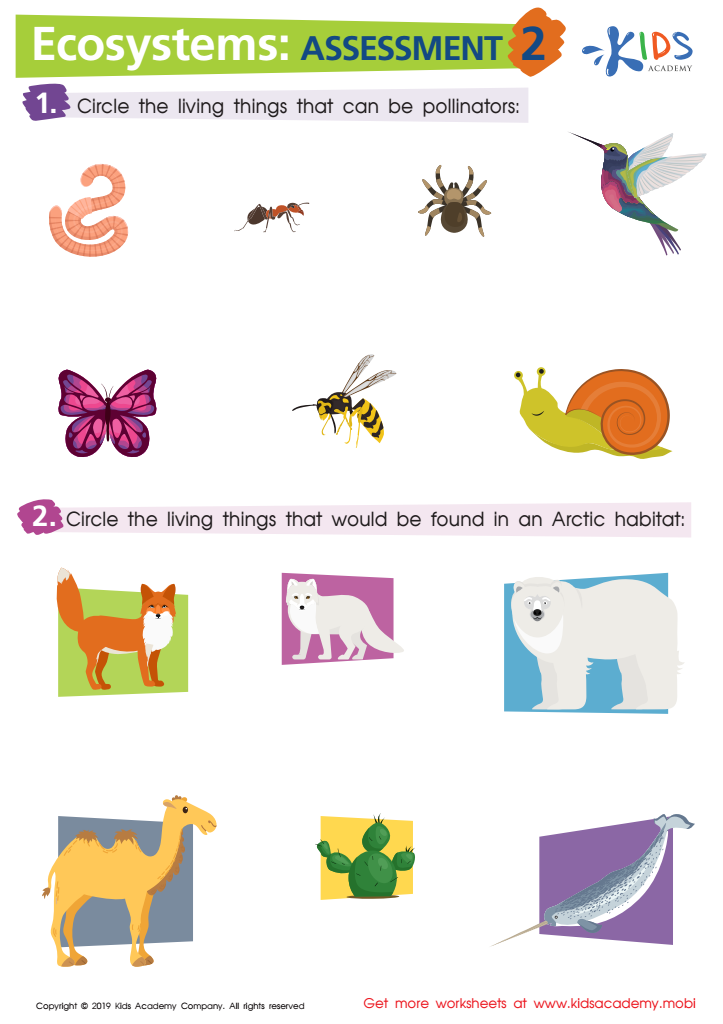Free Printable Worksheets on Plants and Animals for 7-Year-Olds - Fun Knowledge Check Activities
1 filtered results
-
From - To
Plants and Animals Worksheets Activities: Explore the Natural World!
Dive into the fascinating realm of flora and fauna with our Plants and Animals worksheets activities. Perfect for young learners, this comprehensive collection is designed to inspire curiosity and enhance understanding of the natural world. Through engaging and interactive tasks, students will explore the diverse characteristics, life cycles, and habitats of various plants and animals. Each worksheet is thoughtfully crafted to encourage observation, critical thinking, and a deep appreciation for nature's wonders. Ideal for classroom use or at-home learning, our Plants and Animals worksheets activities are your go-to resource for nurturing budding biologists. Embark on this educational adventure today and watch the love for nature grow!


Ecosystems: Assessment 2 Worksheet
Plants and Animals worksheets activities are an invaluable resource for educators and students alike, playing a pivotal role in the exploration of biology and environmental science. These engaging activities offer a hands-on approach to learning, enabling students to deepen their understanding of the world around them. Here's a closer look at why these worksheets are so useful.
Firstly, Plants and Animals worksheets activities foster an interactive learning environment. Instead of passively receiving information, students actively engage with the material, which enhances retention and comprehension. By directly interacting with the concepts being taught, learners can better grasp the complexities of ecosystems, photosynthesis, animal habitats, and more. This hands-on experience makes learning both effective and enjoyable.
Secondly, these activities cater to diverse learning styles. Whether a student is a visual, auditory, or kinesthetic learner, worksheets can be designed to suit their needs. For instance, diagrams of plant structures or food chains can help visual learners, while fill-in-the-blanks or matching exercises might better suit those who learn through reading and writing. This versatility ensures that every student has the opportunity to succeed and benefit from the lesson.
Moreover, Plants and Animals worksheets activities encourage critical thinking and problem-solving skills. Many worksheets pose questions that require students to apply what they've learned in new or hypothetical situations. This not only reinforces their knowledge but also challenges them to think critically about how plants and animals interact within their ecosystems, how they adapt to environmental changes, and the importance of conservation.
Lastly, these activities provide an excellent tool for assessment. Teachers can use them to evaluate students' understanding of the topic, identify areas of weakness, and tailor future lessons to address these gaps. This feedback loop is essential for effective teaching and learning.
In conclusion, Plants and Animals worksheets activities are an essential component of science education. They make learning interactive, accommodate different learning styles, enhance critical thinking, and serve as a valuable assessment tool. These benefits together make such activities an indispensable part of teaching and learning about the natural world.
 Assign to My Students
Assign to My Students







.jpg)








